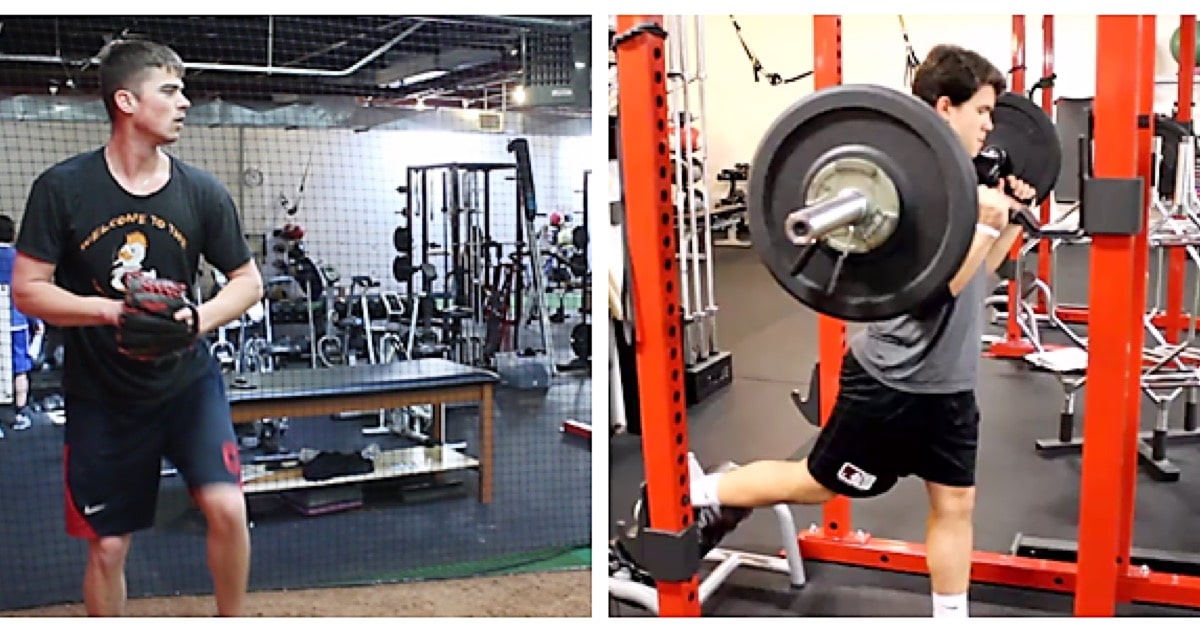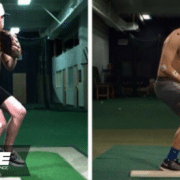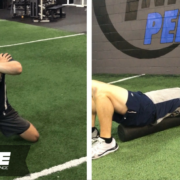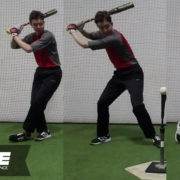Combining Strength Training And Throwing Programs For Baseball Pitchers
The increases in pitching velocity and the distance guys are covering when they go yard tells one thing for sure… Guys are getting in the gym and getting bigger, faster and stronger. Period.
That’s great. As a matter of fact, nothing could make me happier as a strength and conditioning coach. But let it be said, with training comes a responsibility on educating athletes as to how and when is the best way and time to incorporate it.
This gets especially tricky when it needs to be integrated with a throwing program. A great program should incorporate throwing and strength training as ONE program and not viewed as two separate entities. Let me try and briefly explain why one hand washes the other.
When an athlete lifts, he is spending valuable energy that he must pay back via recovery before going at it again the next time. Much like paying back a debt.
As we get closer to the season and throwing is introduced alongside lifting, overall training volume is increased and the amount of debt to payback is doubled. Stack up enough debt, and both an athlete’s recovery and performance will tank.
Any strength training program that’s combined with pitching / throwing needs to be highly coordinated to be effective.
This is the first thing we need to understand when we start putting together a strength and throwing program. As each athlete’s size, strength and other characteristics differ, so must the overall program. We break this down into three parts:
- Physical Preparation
- Skill Preparation
- Periodization
Let’s look at these three separately…
Physical Preparation
This is strength, mobility and power. This is where a lot of guys miss the boat.
These goals will likely create the greatest initial performance improvements as well as lay down a “grass roots” foundation of strength and mobility for the future when training protocols get more advanced. It also goes a long way in helping to reduce the risk of injury.
An example of this would be a 6’2” high school junior weighing 165 lbs. with a less than average strength numbers in the weight room.
For this athlete, playing fall ball and spending that much-needed energy on the weekends pitching becomes not only counterproductive to his physical preparation strength-wise, but adds extra and unnecessary mileage on the arm.
Getting in the weight room earlier (September / October) to work on some hypertrophy prior to starting a strength phase in November / December should be the priority and just what the doctor ordered.
Skill Preparation
Video Analysis and Mechanical Remapping
The use of video analysis helps us break down mechanics, not only from a bio-mechanical standpoint but also from a sequencing and delivery view point. From there, we can better prepare a set of individualized throwing correctives into the throwing program.
Timeline and Throwing Sessions
I am not going to get into the specifics of the timeline too much here, but during a four-month off-season program there should an ample shutdown period which would allow for a heavier lifting schedule. Here is a summary timeline from November – February:
Frankly, I think it’s a must that pitchers throw 2x per week in preparation for the spring. Throwing 1x per week does not allow the connective tissue of the arm to develop the resiliency necessary to resist the demands of a high-level throw.
Pitch Design and Development
We have had a Rapsodo baseball camera in-house for a while and it has changed how we evaluate certain aspects of pitching. We are discovering things about pitchers that were unfathomable just a year ago without this technology.
You can use the information from a Rapsodo in a long-term development plan with pitchers in ways unheard of even a few years back, both for improving their existing repertoire and also in new pitch design and development. Here is a typical screenshot from the device:
While strength training should never be out of the equation for this athlete, it should share the spotlight with more sport-specific work such as correcting mechanical issues, addressing his mobility and increasing force production through plyometric training.
Periodization
Let me start by saying this. Both types of athletes need to spend time in the weight room and working on throwing movements and skills throughout the off-season.
However, each athlete simply needs to spend the bigger part of his time on what he needs the most to optimize performance. This is all about individualized programs and customization.
A complete initial physical assessment and throwing evaluation will give us the roadmap and help us make the best use of the time spent with our athletes.
On a final note, please make sure you’re getting a thorough assessment to determine where you fall on the physical / skill preparation profile. Your off-season program should be designed with this in mind and most importantly make sure it’s performed by a highly qualified PT/strength and conditioning coach or AT with a great track record.
See ya’ in the gym…
Nunzio Signore
Latest posts by Nunzio Signore (see all)
- 4 Ways to Improve Your Command and Control in the Weight Room - November 13, 2018
- How to Use the Weight Room for Baseball Pitching Mechanical Issues - August 7, 2018
- Combining Strength Training And Throwing Programs For Baseball Pitchers - March 27, 2018
















I don’t completely agree. I believe that they should be separate entities that work together as one.
I agree and that was what I took from the article, personally.
I like that you mention how it’s good to get in the weight room early to help you be ready for the strength phase. When doing this, it could help to find training weighted sleeves. This could help you get a workout while batting and doing other exercises to help you build up your strength even more.